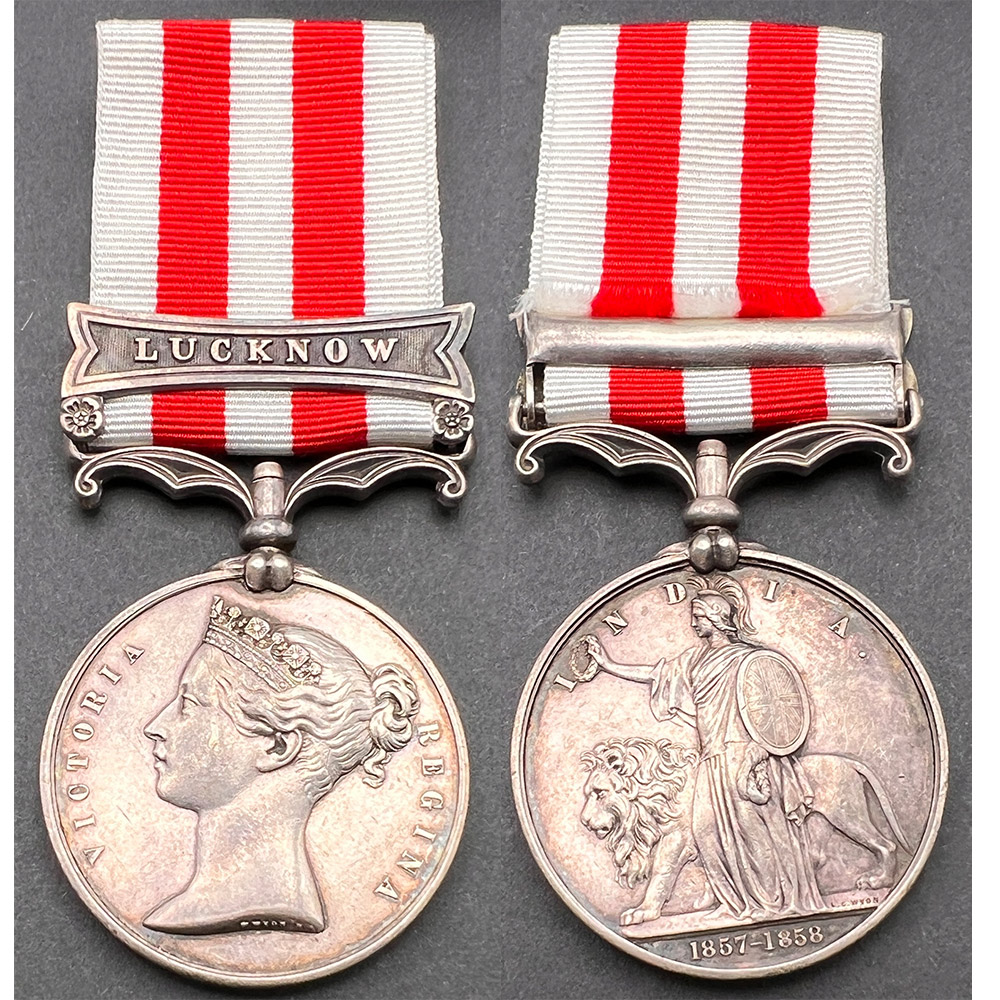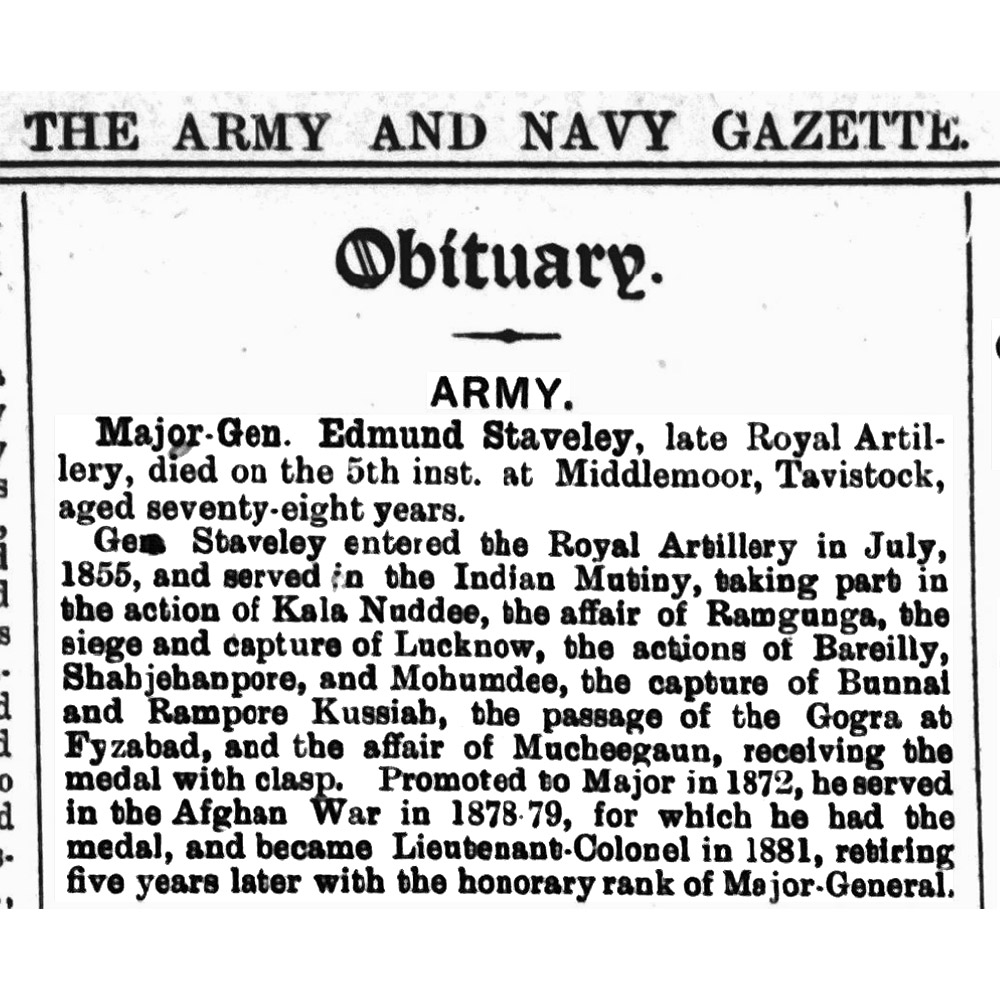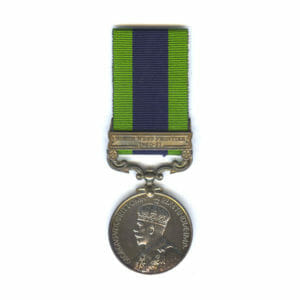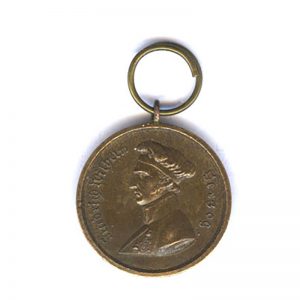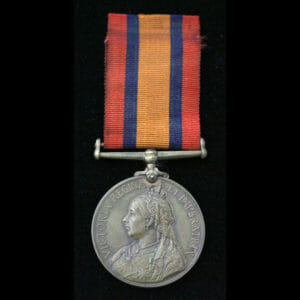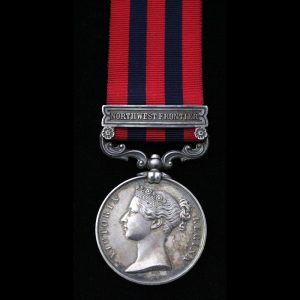Description
Indian Mutiny, bar Lucknow, Major General Edmund Staveley, Royal Artillery. Served in the Indian Mutiny as a young Lieut in at least 11 battles and campaigns.
With obituary, officer’s service records, confirming Mutiny battles fought, etc.
Officially impressed: “LIEUt EDMd STAVELEY. 14th Bn R. ARTy”
His Obituary in the Army and Navy Gazette, 12th December 1914 detailing his services and all his actions he took part in during the Mutiny:
“OBITUARY – ARMY
Major General Edmund Staveley, late Royal Artillery, died on 5th inst, at Middlemoor, Tavistock, aged 78 years.
General Staveley entered the Royal Artillery in July 1855, and served in the Indian Mutiny, taking part in the action of Kala Nuddee, the affair of Ramnuga, the Siege and Capture of Lucknow, the actions of Bareilly, Shahjehanpore, and Mohumdee, the Capture of Bunnai and Rampore Kussiah, the Passage of the Gogra at Fyzaband, and the affair of Mucheegaun, receiving the medal with clasp.
Promoted to Major in 1872, he served in the Afghan War in 1878-79, for which he had the medal (and was also MID), and became Lieutenant Colonel in 1881, retiring 5 years later with the Honorary Rank of Major General.”
Edmund Staveley was born during 1836, in Kensington, London.
He was baptised on 9th August 1836 in St Mary Abbott’s Church in Kensington.
He was the son of Thomas and Eliza Wowski Dickinson.
The Staveley’s were a well regarded family from Yorkshire. They are believed to have had been around in Yorkshire since the Anglo Saxon days before the Norman invasion circa 1066, with some connection to the small village of Staveley in Harrogate, the naming coming from the Anglo-Saxons and mentioned in the Domesday Book. The original Staveleys having come from the line of Ecgfrith of Northumbria (990-1042).
His uncle was Lieutenant General William Staveley CB (1784-1854), a former Peninsular War veteran who later became the Commander and Lieutenant Governor of Hong Kong.
So there was likely little trouble getting a young Edmund a commission once he became of age, also his Cousin at the time, who was a little older than him was General Sir Charles William Dunbar Staveley GCB (1817-1896)
Edmund’s Grandfather, was a painter who exhibited regularly at Burlington House.
As a young boy of 14 on the 1851 Census, he was living in Worksop, Nottinghamshire.
He would receive an unusual education at the tiny private boarding institute run by the Swiss Dr Beatus (Benjamin) Heidenmaier PHD.
This was known as “Dr Heldenmaier’s Pestalozzian Institution.”
“It is a well-conducted establishment, on the Pestalozzie plan, combining the training of a home with good practical and modern tuition.”
GJ Holyoake, the noted nationalist writer described it as: “Unrivalled among English schools for the industrial, social and classical education it imparted.”
His first marriage:
“On the 15th July 1865 at St Pauls Church, Malta, by the Venerable Archdeacon Cleugh, Captain Edmund Staveley, Royal Artillery, to Caroline, eldest daughter of Sir J. Williams Smith KCB.”
His wife had been born in Sydney, Australia.
ARMY PROMOTIONS
2nd Captain, 9th June 1863
Captain, 1st April 1872
Major 8th July 1872
Lt Colonel 21st December 1881 (1st July)
Colonel, 21st December 1886 (1st July 1885)
Major General 21st December 1887.
In later life, Western Daily Mercury, 22nd March 1899:
A MAJOR GENERAL SUMMONED
“Major-General Edmund Staveley, of Ess-hill House, Newton Abbot, a member of the Mid Devon Constitutional Club, was summoned by Mr Thomas Stone Under-hay, Assistant Overseer for Highweek, for £2 14s 8d, rates unpaid. Defendant did not appear, PC Clatworthy proved service of summons.”
